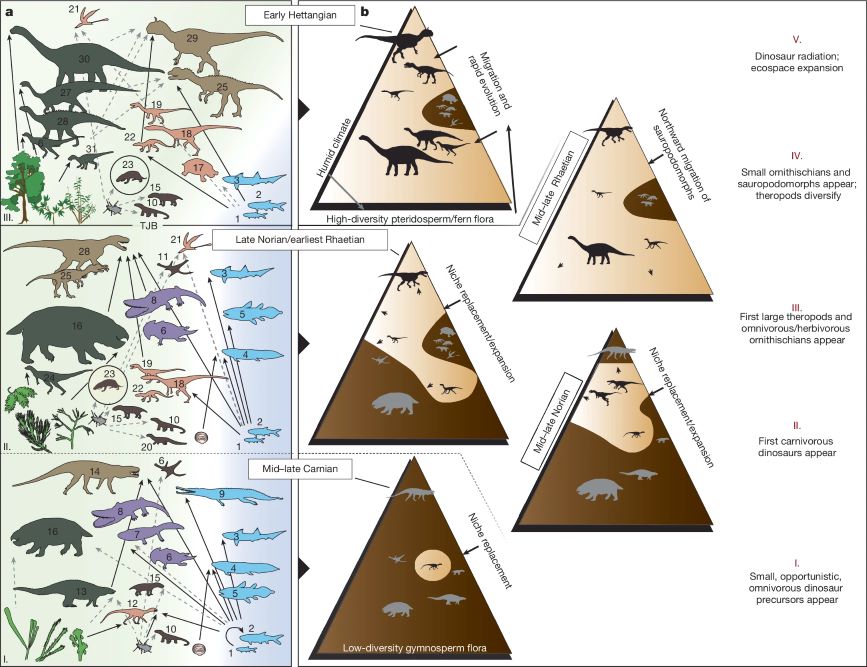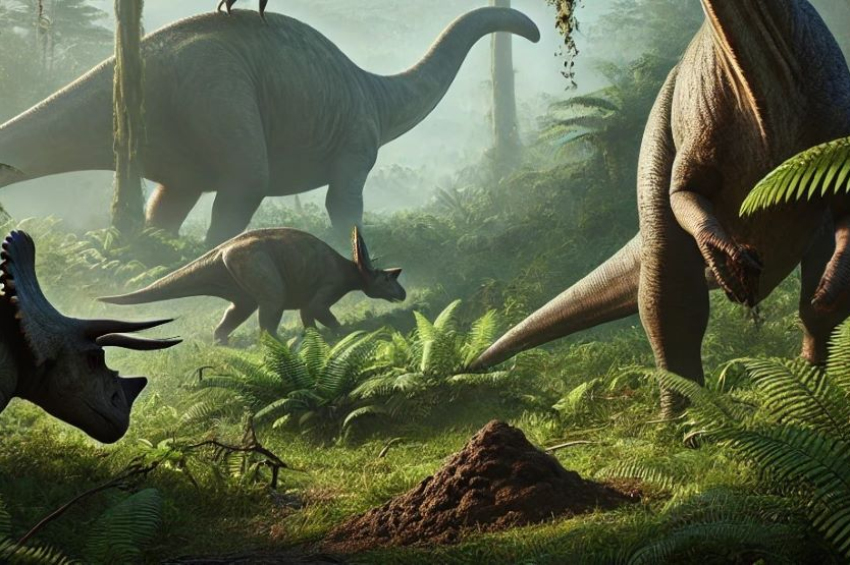Fossilized poop unlocks secrets of dinosaurs’ rise to supremacy
When dinosaurs first appeared around 230 million years ago, they were just one of many types of reptiles living on a large supercontinent. But 30 million years later, they became the dominant species, while many other reptiles vanished.
While the cause of dinosaurs’ disappearance is pretty known – an asteroid that hit Earth 66 million years ago - scientists have long wondered what made dinosaurs so successful that they roamed the planet un challenged for many million years.
Until they took a closer look at their fossilized droppings and published a study in the journal Nature.
A team led by Martin Qvarnström, a paleontologist at Uppsala University in Sweden, focused on fossilized remains from dinosaurs’ digestive systems — mainly poop and vomit, known as bromalites. These fossils, often ignored by scientists in the past, contain valuable information about ancient ecosystems.

The evolution of the food web during the dinosaur era. Credit: Nature
Over 25 years, researchers collected more than 500 bromalite fossils from about 10 sites in Poland and other places. These fossils date back to a period between 247 million and 200 million years ago, covering the Late Triassic to Early Jurassic Periods.
By analyzing the size and contents of these fossils, scientists discovered that over time, dinosaur droppings became larger and more diverse. This suggests that bigger dinosaurs with different diets were emerging.
Then the team used high-resolution 3D scanning to study the internal structure of the bromalites.
More to read:
[video] Los Angeles museum exhibits the world’s only green-boned dinosaur
Some fossilized droppings contained well-preserved remains of fish, insects, and plants, while others had crushed bones from prey animals.
By comparing these remains with fossilized skeletons and footprints found at the sites, researchers were able to identify the types and sizes of dinosaurs that lived in those environments.
How dinosaurs rose to supremacy
The study identified five key phases in the rise of dinosaurs:
1. Early ancestors – The first dinosaurs were omnivores, eating both plants and animals.
2. Diet specialization – Some evolved into plant-eaters (herbivores), while others became meat-eaters (carnivores).
3. Volcanic influence – Volcanic activity may have led to the growth of new types of plants, supporting larger herbivores.
4. Bigger dinosaurs emerge – These plant-eaters grew larger and more diverse, attracting larger carnivorous dinosaurs.
5. Dinosaur domination – By 200 million years ago, dinosaurs had become the most powerful land animals, a status they held until an asteroid impact wiped them out 66 million years ago.
More to read:
Clovis people – forefathers of Amerindians – ate mostly mammoth
Before this research, scientists had two main theories about why dinosaurs became dominant:
- One theory suggested that dinosaurs were simply better adapted physically, with stronger legs and more efficient movement.
- Another theory proposed that they were better at adapting to climate changes.
This new study suggests that both factors played a role. Dinosaurs were not only physically superior but also able to adjust their diets to changing environments. For example, an ancient mammal-like reptile called the dicynodont mainly ate conifers and eventually died out.
In contrast, early large herbivorous dinosaurs, like sauropodomorphs, ate a variety of plants, including tree ferns and even charcoal, which may have helped them digest toxic plants.
Diversification of consumption ensured sustainability but “vegetarians” ultimately lived longer, the researchers concluded.
***
NewsCafe is an independent outlet. Our sources of income amount to ads and subscriptions. You can support us via PayPal: office[at]rudeana.com or https://paypal.me/newscafeeu, or https://buymeacoffee.com/newscafe - any amount is welcome. You may also want to like or share our story, that would help us too.







